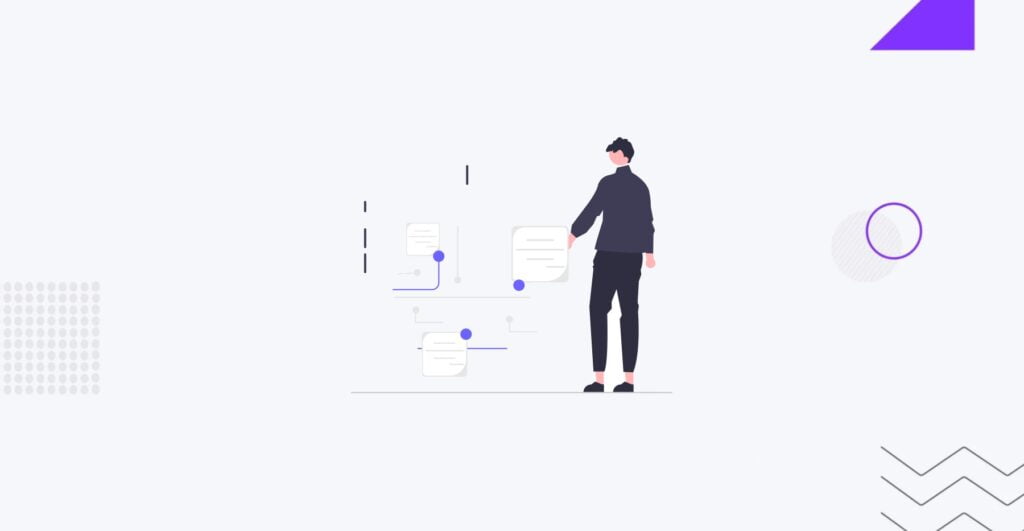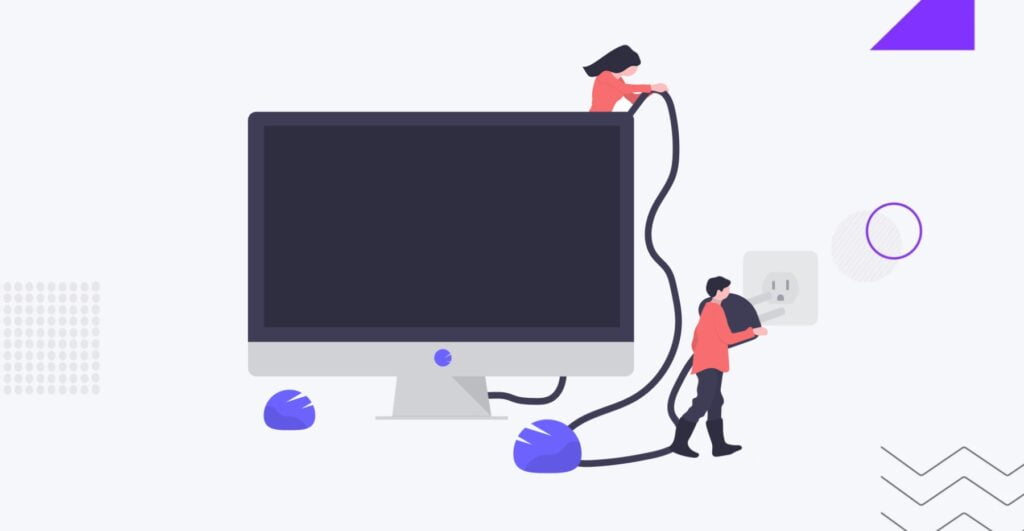How to Do a WordPress Security Audit?
Table of Contents

The importance of comprehending the robustness of your website’s security cannot be overstated, as it serves as the frontline defense against an array of potential threats lurking in the virtual space.
While WordPressWordPressOpen-source content management system (CMS) that allows users to create and manage websites and blogs.
More About WordPress, as a widely adopted Content Management System (CMSCMSA content management system is software aiding users to create, manage, and modify website content.
More About CMS), boasts a secure default framework, a nuanced understanding prevails that underscores the necessity for continuous vigilance. Acknowledging the dynamic nature of website security, it becomes paramount to dispel the common misconception that a WordPress security audit is a one-time endeavor, akin to an isolated event safeguarding against potential breaches.
A staggering revelation accentuates the vulnerability of over 50 million WordPress websites, leaving them susceptible to potential threats. Significantly, many site administrators remain blissfully unaware of these vulnerabilities, attributed to the sporadic nature of their security checks. As we delve into WordPress security, it becomes evident that a proactive and recurrent approach is requisite, ensuring that the virtual fortresses of websites remain resilient against the relentless tide of cyber threats.
What Is a WordPress Security Audit?
WordPress Security Audit is an integral process designed to scrutinize a website’s digital fortress, with the primary objective of detecting any potential signs of a security breach. At its core, this audit is a comprehensive examination that goes beyond the surface, delving into the intricate layers of a website’s architecture. This meticulous evaluation is not merely a cursory glance but a vigilant search for any indicators of suspicious activity, unwarranted changes in code, or subtle performancePerformanceRefers to how fast a website or web application loads and responds to user interactions.
More About Performance irregularities that might signify an underlying security compromise. By adopting a proactive stance, a WordPress security audit strives to uncover any lurking threats that may have eluded routine monitoring.
Crucially, this audit extends its purview to the intricate ecosystem of plugins and themes that often constitute the lifeblood of a WordPress website. Recognizing the vulnerabilities that may lie within these third-party components, the audit diligently assesses their integrity, seeking out potential weak points that could be exploited by cyber threats.
Looking forward to building a secure website?
The significance of a WordPress security audit is further underscored by its role in ensuring the ongoing robustness of a website’s defenses. It goes beyond a one-time formality, emphasizing the need for periodic audits to adapt to the ever-evolving landscape of cybersecurityCybersecurityIt involves defending computers, servers, mobile devices, electronic systems, networks, and data from digital attacks.
More About Cybersecurity. This recurrent assessment is not a mere formality but a strategic imperative, crucial for keeping security measures abreast of the latest developments and potential threats. As digital landscapes evolve, so must the fortifications that guard our virtual domains, and a WordPress security audit stands as the cornerstone of this proactive defense.
When to Perform a WordPress Security Audit?

In website security, timing is of the essence, and a strategic approach to WordPress Security Audits is crucial for maintaining a resilient digital presence. Here’s a guideline on when to initiate this critical assessment:
Performing Regular Quarterly Audits
To establish a robust security posture, conducting a comprehensive WordPress Security Audit at regular intervals, ideally quarterly is recommended. This periodic assessment is a proactive measure to stay ahead of potential threats and vulnerabilities that may emerge over time.
Immediate Action Triggers
However, waiting for scheduled audits may not always be sufficient, especially in the face of emergent issues. Immediate action is strongly advised if any red flags are observed:
- Slow Website Performance:
A sudden decline in website speed or responsiveness could indicate an underlying security issue. Immediate attention is necessary to identify and rectify the cause promptly.
- TrafficTrafficThe number of visitors or users who visit a particular website.
More About Traffic Drops:
Significant drops in website traffic may be indicative of compromised security, potentially leading to search engine blacklisting. Swift action is essential to prevent further damage.
- Suspicious User Accounts:
The discovery of unfamiliar or suspicious user accounts could signal unauthorized access. Initiating an audit promptly helps identify and neutralize potential security threats associated with these accounts.
- Suspect Links or Content:
The presence of dubious links or content on the website may signify a security breach. A prompt security audit is necessary to uncover and eliminate any malicious elements.
Performing a Basic Manual WordPress Security Audit
Ensuring the robust security of your WordPress website requires a proactive approach, and a basic manual security audit is a fundamental step in this process. Here’s a comprehensive guide on the essential tasks to include in a manual security audit:
1. Update WordPress Core, Plugins, and Themes
Begin by ensuring that your WordPress core, plugins, and themes are up to date. Regular updates include security patches that address known vulnerabilities. Keeping your website components current is a primary defense against potential security breaches.
2. Check User Accounts
Review the list of user accounts associated with your WordPress site. Ensure that each account has the necessary level of access required for its role. Remove inactive or unnecessary accounts, minimizing potential entry points for unauthorized users.
3. Run a Security Scan
Employ a reliable security pluginPluginA piece of software that can be easily installed and activated on a CMS platform to enhance its capabilities.
More About Plugin or tool to scan your website thoroughly. This scan should encompass all files, directories, and the databaseDatabaseAn organized collection of data, typically stored electronically.
More About Database, identifying any signs of malicious code, vulnerabilities, or unauthorized access. Regular scans contribute to early threat detection.
4. Monitor Analytics for Anomalies
Analyze website analytics data for unusual patterns or deviations from the norm. A sudden spike or drop in traffic, unexpected user behavior, or irregular access patterns could indicate a security issue. Continuous monitoring helps in promptly identifying and addressing potential threats.
5. Set Up Regular Backups
Implement a robust backupBackupA process of creating and storing copies of website data and files as a precautionary measure.
More About Backup strategy to safeguard your website’s data. Regularly backup your website, including databases and essential files. In the event of a security incident, having up-to-date backups ensures that you can quickly restore your site to a secure state.
Performing an Automatic WordPress Security Audit

Streamlining the process of WordPress security auditing and fortifying against potential threats can be achieved efficiently using security plugins. These tools automate various aspects of the security assessment, making it more convenient for website owners. Here’s an overview of the benefits and considerations when leveraging plugins for an automatic WordPress security audit:
Efficient Security Auditing
Security plugins offer a convenient and efficient way to conduct regular security audits on your WordPress website. These automated tools are designed to scan your site for vulnerabilities, potential exploits, and signs of malicious activity.
Real-time Threat Protection
Many security plugins provide real-time monitoring and threat detection capabilities. They actively track user activity, and incoming traffic, and file changes, promptly identifying and responding to any suspicious behavior. This proactive approach adds an extra layer of defense against evolving security threats.
Malware Detection and Removal
Automated security tools often include robust malware detection mechanisms. They can scan your website for malicious code, infected files, and potential malware threats. In case of detection, these plugins may facilitate automated removal or provide guidance on securing your site.
Firewall Implementation
Security plugins commonly integrate firewallFirewallA network security system that monitors and controls incoming and outgoing network traffic based on predetermined security rules.
More About Firewall functionality, allowing you to block malicious attempts to access your site proactively. Firewalls can prevent unauthorized access, brute force attacks, and other malicious activities, contributing significantly to your website’s overall security posture.
Regular Auditing Schedule
Plugins enable the scheduling of regular security audits, ensuring that your website’s security measures are consistently up to date. Automating these tasks reduces the likelihood of oversights and ensures continuous protection against emerging threats.
Need to ensure your site is fast, secure, and reliable?
Implementing an automatic WordPress security audit through plugins is a proactive and user-friendly approach to safeguarding your website. While specific plugins may offer varying features, the collective benefit lies in the convenience and enhanced security they bring to your digital environment. Regularly updating and configuring these plugins can significantly contribute to maintaining a secure and resilient WordPress site.
Tools for WordPress Security Audit

Conducting a comprehensive WordPress security audit involves leveraging specialized tools that combine automated efficiency with advanced functionalities. Here are some recommended tools, including their applicationApplicationA software program designed to perform specific functions or tasks on electronic devices, such as smartphones and tablets, computers, and smart TVs.
More About Application in the security audit process:
Kali Linux
Description: Kali LinuxLinuxAn open-source, Unix-like operating system kernel that forms the core of numerous operating systems known as Linux distributions or simply “Linux distros.” It was created by Linus Torvalds in 1991 and has since become one of the most widely used and influential pieces of software in the world.
More About Linux is a Debian-based Linux distribution specifically designed for digital forensics and penetration testing. It comes pre-installed with numerous security tools, making it a go-to choice for ethical hackers and security professionals.
Application in Audit: Kali Linux provides a versatile platform for various security tasks, including vulnerability scanning, penetration testing, and ethical hacking. It facilitates a controlled environment for assessing WordPress sites and their security measures.
WPScan
Description: WPScan is a black box WordPress vulnerability scanner. It allows security professionals and site administrators to assess the security posture of their WordPress installations by identifying vulnerabilities in plugins, themes, and the core system.
Application in Audit: Using WPScan, users can obtain valuable information about a WordPress site, including version numbers, plugin details, and potential vulnerabilities. The tool’s extensive database aids in pinpointing security issues that require attention.
PHPStan
Description: PHPStan is a static analysis tool for PHPPHPHypertext Preprocessor is a programming language primarily used for web development.
More About PHP code. It analyzes the codebase and identifies potential issues, bugs, and vulnerabilities. It is particularly useful for maintaining code quality and security.
Application in Audit: PHPStan can be employed to perform a thorough code analysis of a WordPress site. By scrutinizing the PHP code, it assists in uncovering hidden bugs and vulnerabilities that might be exploited by attackers.
Sqlmap
Description: Sqlmap is an open-source penetration testing tool that automates detecting and exploiting SQLSQLStructured Query Language is a programming language used to manage and manipulate relational databases.
More About SQL injection flaws. It is designed to assess the security of databases and identify potential weaknesses.
Application in Audit: While WordPress core is generally secure, vulnerabilities in plugins or themes could lead to SQL injection risks. Sqlmap helps test and identify such vulnerabilities, providing insights into the security of the site’s database.
XSSer
Description: XSSer is a penetration testing tool specifically designed for finding and exploiting Cross-Site ScriptingScriptingThe process of creating a series of commands or instructions that are executed by a computer or software application.
More About Scripting (XSS) vulnerabilities. It aids in identifying weaknesses in web applications, including those built on WordPress.
Application in Audit: XSSer can be used to assess WordPress modules for XSS vulnerabilities. Its graphical interface simplifies the process, making it accessible for security professionals and administrators.
WPSpolit
Description: WPSpolit is a customization of the Metasploit framework, focusing on WordPress-specific exploits. It contains a collection of exploits tailored for WordPress sites.
Application in Audit: By leveraging WPSpolit within the Metasploit framework, security professionals can access and run WordPress-specific exploits. This helps conduct a detailed audit to identify and address specific vulnerabilities in a WordPress installation.
When used collectively within a structured security audit, these tools contribute to a robust defense against potential threats to your WordPress website. Regularly updating the tools ensures that your security measures remain effective against emerging risks in the dynamic online landscape.
Conclusion
In conclusion, safeguarding your WordPress website is an ongoing commitment that demands attention to detail and proactive measures. While WordPress boasts inherent security features, the complexities of the digital landscape necessitate a vigilant approach. Embracing the importance of a security audit is paramount in fortifying your site against potential threats. Recognizing the arduous nature of a security audit, it is crucial to view it as an investment in the long-term resilience of your online presence. By identifying vulnerabilities, suspicious activities, and potential risks, you lay the foundation for a robust defense strategy.
In line with the proactive stance on security, conducting quarterly audits and vulnerability scans is strongly recommended. This periodic assessment ensures that your security measures remain adaptive to the evolving threat landscape, providing a holistic approach to WordPress security. The journey toward a secure WordPress website involves a continuous loop of assessment, improvement, and adaptation. Embrace the evolving nature of cybersecurity, and with each audit, fortify your website’s defenses for a safer online experience.




